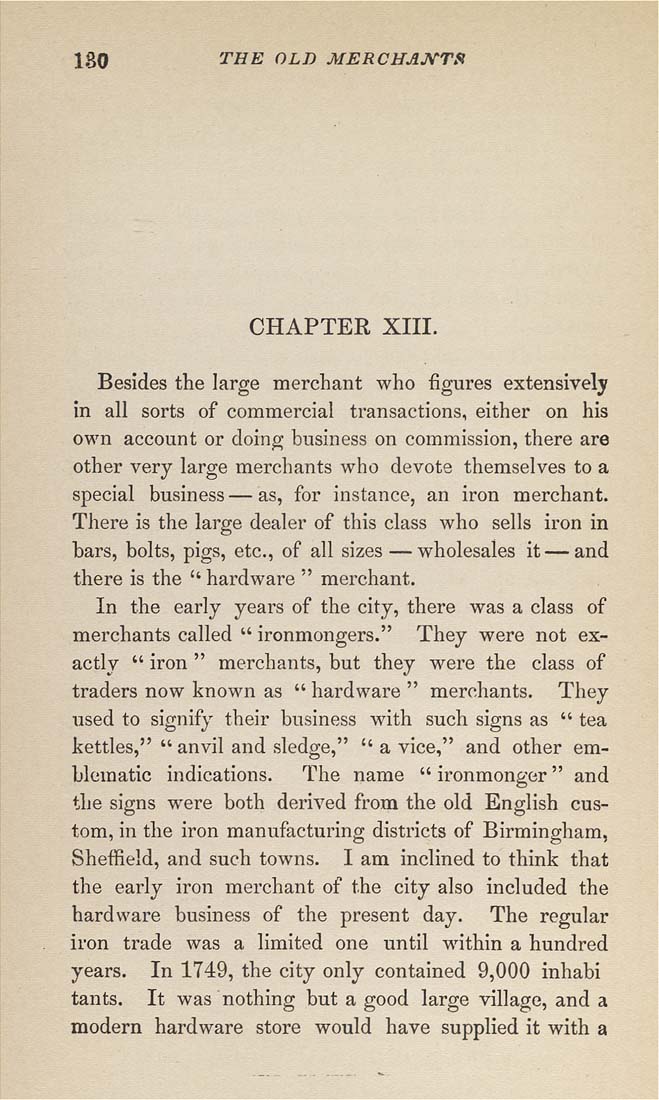180 THE OLD MERCHAJVTS
CHAPTER XIII.
Besides the large merchant who figures extensively
in all sorts of commercial transactions, either on his
own account or doing business on commission, there are
other very large merchants who devote themselves to a
special business — as, for instance, an iron merchant.
There is the large dealer of this class who sells iron in
bars, bolts, pigs, etc., of all sizes — wholesales it — and
there is the " hardware " merchant.
In the early years of the city, there was a class of
merchants called " ironmongers." They were not ex¬
actly " iron " merchants, but they were the class of
traders now known as " hardware " merchants. They
used to signify their business with such signs as " tea
kettles," " anvil and sledge," " a vice," and other em¬
blematic indications. The name " ironmonger " and
the signs were both derived from the old English cus¬
tom, in the iron manufacturing districts of Birmingham,
Sheffield, and such towns. I am inclined to think that
the early iron merchant of the city also included the
hardware business of the present day. The regular
iron trade was a limited one until within a hundred
years. In 1749, the city only contained 9,000 inhabi
tants. It was nothing but a good large village, and a
modern hardware store would have supplied it with a
|








